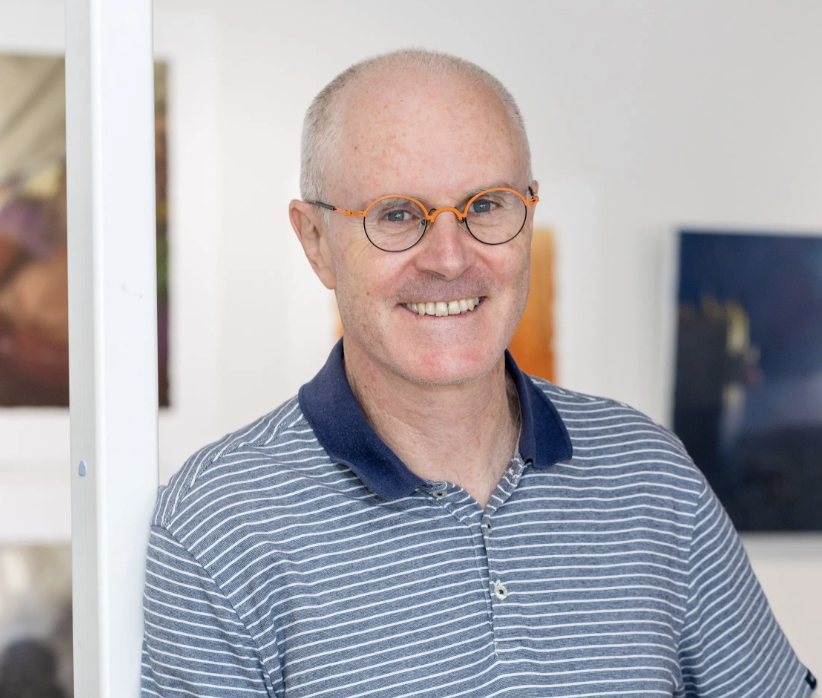I live with type 1 bipolar disorder. Professionally I am a visual artist, writer and composer. My psychiatrist recently suggested that perhaps I could rethink the label of the illness, that it wasn't serving me well. The reason she raised this was because my creativity is linked to the cycles of my illness. Coming out of episodes my brain can go into creative overdrive. I also have the neurological condition of synaesthesia which is a cross-wiring of the perceptive senses. Sound elicits colours and shapes in my visual cortex.
Synaesthesia is intrinsically linked to my bipolar condition and is an early warning signal that an episode is approaching - sounds become more colourful and I find myself flinching at abstract shapes in my vision when sudden loud noises occur, such as passing motorcycles. In severe episodes I have temporarily lost the ability to understand spoken language - people talk but it is just gibberish to me. As they speak however, there are the most beautiful swirling shapes and colours floating around their heads.
Because, like many in my position, I have often felt shame and negativity around my mental illness, my psychiatrist suggested that I should think of myself as neurodivergent rather than ill. I do now refer to myself in this way, though sometimes, in particular situations, I name what I live with bipolar, and that's because I want people to know that I have nothing to be embarrassed about or ashamed of. I used to cringe whenever I thought about some of the things I've done and said during episodes in the past, but I set about contacting those I'd caused hurt or anxiety, and apologised, explaining the capricious nature of the condition. I've learned to accept that some people are understanding and will embrace me and others won't but that is not a reflection of me.
My experiences of episodes and the many hospitalisations I've undergone have really determined who my friends are and have also meant I have become estranged from some members of my family. I have never once been visited in hospital or contacted during those times by anyone in my family or by people I'd called friends.
Sadly, for many people with complex mental illnesses this situation is not uncommon. I know what it is to be on the receiving, sometimes brutal, end of stigma, but it has often been the small things, the throw-away comments that hurt most. On one occasion I'd just been released after a few weeks in a psychiatric ward and I phoned my mother to let her know that I was OK. She asked, 'are you in public right now?'
'Yes,' I responded I was standing in a crowded mall in the middle of the city .
'Don't say any of this too loudly,' she said, 'you don't want people thinking you're mental.' My mother has since passed away and I dearly love and cherish her memory, she was a wonderful woman. Her prejudice towards those suffering from mental illness was commonly held in her generation.
I do understand that people who are mentally unwell can be scary, particularly if they are, as I have been, psychotic. But generally people are afraid of them because they are ignorant of the illness. I often use the analogy of someone with a severely broken leg. In the immediate aftermath of such an injury, a passer-by who tries to help and touches the injured person might get snapped at, even screamed at. But we are not afraid of this reaction because we understand fully why it occurs; people in extreme physical pain can lash out verbally, sometimes even physically.
Deep mental pain is no different, but because we can't see the wound, we're afraid of the reaction. Most people who are psychotic are not violent. In my country, Australia, studies show that people with psychotic mental illness receiving treatment are no more violent than any other sector of society Sane Australia: Mental Illness Facts and Statistics . In terms of violence, young men who are not diagnosed with a mental illness but are intoxicated with drugs or alcohol are in fact statistically the most dangerous members of society. Although I cannot remember much about my own experiences of psychosis memory blackouts are not uncommon with such episodes , I do have a clear image of the fear in other's eyes, and that has been deeply humiliating.
Through good treatment and a loving relationship, I have been relatively stable for well over a decade now and the time has come to share a sense of what it is like to be psychotically unwell, to add my voice to the conversation that encourages understanding and empathy around neurodivergence. With the benevolence of a philanthropist I was given the opportunity to create a work of art, music and literature that takes people on a metaphorical 'Alice in Wonderland'-like journey into a psychotic episode. It's called The Tree of Ecstasy and Unbearable Sadness and centres around a boy who has a tree growing inside him, whose flower is ecstasy and whose fruit is unbearable sadness.
This work has garnered some extraordinary feedback from people from all walks of life and life-experiences and has confirmed for me that most of us want only the best for our fellow humans. It is fear borne of ignorance that causes mistrust and ostracisation and the plethora of destructive issues that fester from these states. I am fortunate to have witnessed, both within and without psychiatric wards the very best of human kindness.
Watch an excerpt here:

